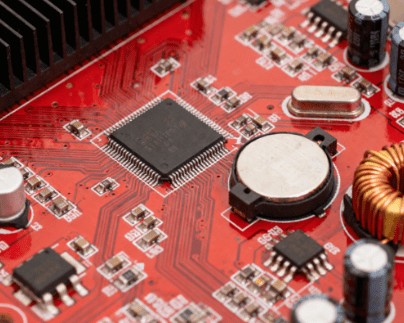Huachuang PCBA Processing Factory: High – speed Chip Mounters – The Core Driving Force of Electronic Manufacturing
This article focuses on the high - speed chip mounters in Huachuang PCBA Processing Factory. It firs
What Is the Difference Between PCB and PCBA?
Table of Contents
TogglePCB vs PCBA is a fundamental distinction in electronics manufacturing. A PCB is merely the foundational printed circuit board, while a PCBA includes all assembled components, making it functional. This article guides OEM engineers, procurement leaders, and end clients through both concepts—even those asking “what is a PCB board” or “what is PCBA and its components”—and helps you decide which route suits your project.
A Printed Circuit Board (PCB, or printed circuit board assemblies when populated) is a bare board made of insulating material (like FR-4) with copper traces, vias, solder mask, and silkscreen. It supports and interconnects components but has no functionality until parts are added. Instead of point-to-point wiring, a PCB offers a compact, reliable platform. You’ve likely encountered a PCB in devices like smartphones or computers.
Key terms: what does PCB stand for in electronics, bare PCB, PCB definition, define PCB, pcb board assembly.
For references, see Wikipedia’s “Printed circuit board” explanation.
A PCBA (Printed Circuit Board Assembly) builds on the PCB by adding and soldering components—resistors, ICs, connectors—rendering the board functional. Assembly uses methods like SMT (Surface Mount Technology) and Through-Hole Technology (THT), often in combination. After components are placed, the board undergoes testing (e.g., AOI, In-Circuit Test) to verify function.
| Feature | PCB | PCBA |
|---|---|---|
| Definition | Bare board | Assembled, functional board |
| Components Added | None | Resistors, ICs, connectors, etc. |
| Functionality | None | Fully functional |
| Manufacturing Processes | Etching, drilling, laminate | Component placement, soldering |
| Cost & Time | Lower, faster | Higher, longer |
| Terminology Confusion | “What is PCBA” vs “PCB on PCB” | Often confused, same initials |
In brief:
1.PCB is an inert support; PCBA is an active, installed circuit.
2.PCB serves design and prototyping needs, whereas PCBA is ready for deployment.
Keywords: pcb and pcba, printed circuit board assemblies, pcb vs pcba, pca vs pcb, pcb vs pca, pcb pcba.
1.Prototype or design phase: Order bare PCBs. Budget-friendly and flexible for testing. (“bare board manufacturing”, “bare PCB board”)
2.Turnkey integration: Opt for PCBA to receive fully tested, functional boards ready for installation. (“pcba manufacturing”, “pcb board assembly”)
3.In-house capacity: If you have assembly capabilities, you may buy PCB only and handle PCBA yourself.
4.Supply chain simplicity: Selecting a supplier for both manufacturing and assembly ensures consistency, quality, and process control.
1.Capacity for Bare PCB Fabrication: multilayer support, quality materials (FR-4, etc.), reliable processes.
2.Assembly Expertise: SMT, THT, mixed, AOI, reflow and wave soldering in-house.
3.Quality & Testing: IPC, ISO certs, ICT (in-circuit test), functional testing, flying probe testing for low volumes.
4.One-Stop Service: Design for manufacturing (DFM), procurement, assembly, testing, and logistics.
-PCB: Bare board with copper pathways; no components; low cost; ideal for prototyping.
-PCBA: Fully assembled board with components; functional; higher cost and complexity; ideal for production use.
To learn more about PCBA services, please contact Guangzhou Huachuang Precision Technology.
This article focuses on the high - speed chip mounters in Huachuang PCBA Processing Factory. It firs
Discover how HCJMPCBA leverages the advanced Samsung SM471 machine to optimize the PCB manufacturing
The electronics manufacturing industry is undergoing significant changes driven by technological adv
